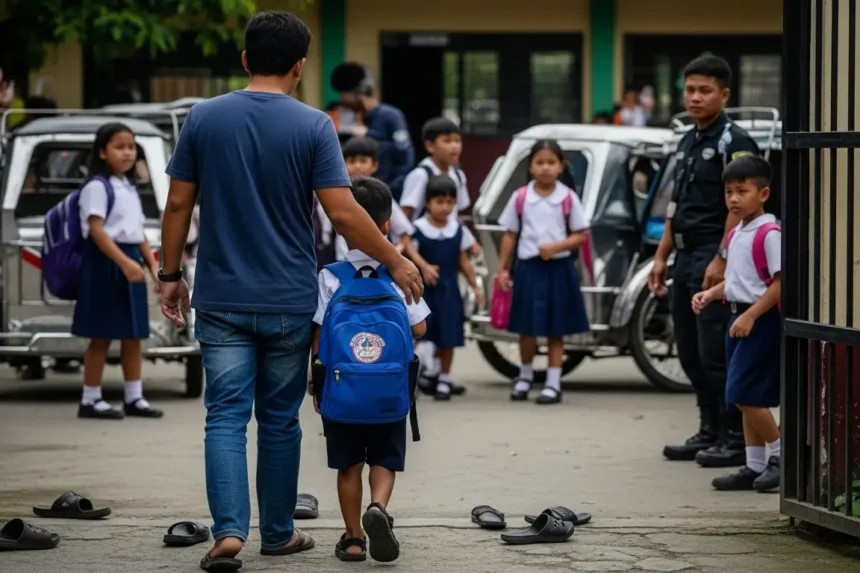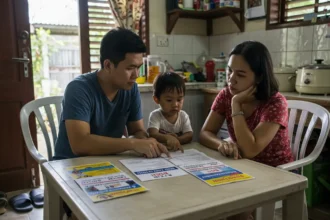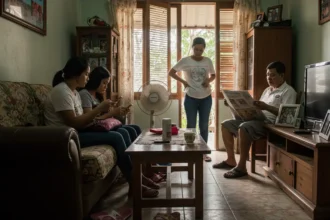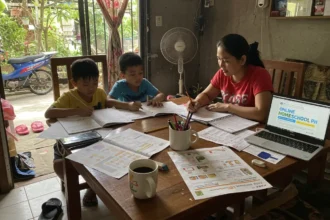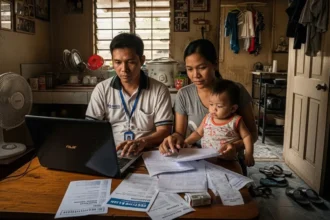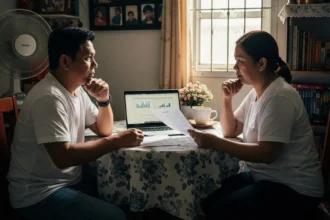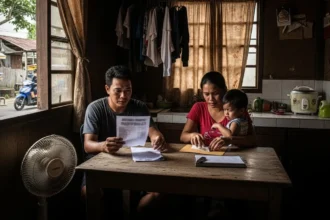Bullying in the Philippines is more common than many parents realize. From teasing and name-calling like “tabachingching” to physical harm and even online harassment, these experiences can leave lasting scars on a child’s self-esteem and mental health. That’s why in 2013, the government passed the Anti-Bullying Act (RA 10627), requiring every school to create clear policies against bullying.
- 🚩 Signs Your Child May Be Bullied
- 🗣️ Create an Open Communication Channel
- 🛡️ Teach Your Child How to Respond
- 🏫 Working with the School
- 💻 Bullying in the Digital Age (Cyberbullying)
- 💪 Strengthening Your Child’s Confidence
- 🔍 When Your Child Might Be the Bully
- ⚖️ The Legal Aspect of Bullying in the Philippines
- ❓ FAQs About Bullying in the Philippines
- 💖 Standing Strong: Parents as the First Line of Defense
- 📚 References
Yet, many Filipino parents still don’t know their rights-or their child’s. Whether it happens in the classroom, at recess, or through cyberbullying on Facebook or Messenger, the role of parents is crucial. This guide will walk you through the signs of bullying, how to protect your child from bullies, and the steps to work with teachers and schools to ensure your child feels safe and supported.
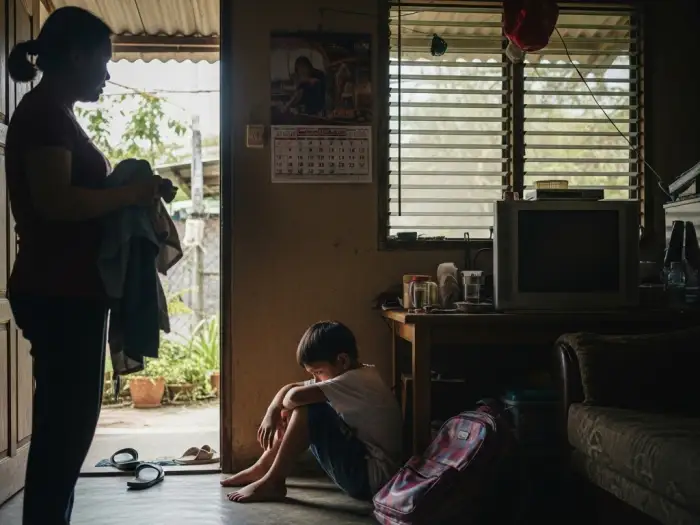
🚩 Signs Your Child May Be Bullied
Not all children will come home and say outright, “I’m being bullied.” Many Filipino kids choose silence, either because they feel ashamed, don’t want to worry their parents, or fear that speaking up will make them even more of a target. That’s why parents need to be keen observers of changes in behavior-sometimes the smallest shifts are the biggest clues.
Common Red Flags and What They Mean
1. Sudden Fear of Going to School
-
Example: Your child used to wake up early, excited for class. Now, they suddenly complain of stomachaches or headaches almost every morning.
-
Why it happens: Anxiety from bullying often manifests in physical symptoms. The thought of facing bullies triggers stress, and kids look for excuses (“Ayoko na muna pumasok, masakit ang tiyan ko”).
2. Unexplained Injuries or Damaged Belongings
-
Example: A broken eyeglass frame, a torn notebook, or scratches they claim came from “playing.”
-
Why it happens: Kids often cover for bullies by saying they were clumsy or lost things. In reality, bullies may destroy their belongings or physically harm them to assert control.
3. Sudden Mood or Personality Changes
-
Example: A cheerful, talkative child becomes quiet and withdrawn. Or a usually calm kid starts snapping at siblings and crying easily.
-
Why it happens: Bullying eats away at a child’s sense of safety and confidence. They carry the stress home, where it shows as mood swings, irritability, or depression.
4. Drop in Grades or Focus
-
Example: A student who once excelled in Math suddenly struggles to pass quizzes, or their handwriting gets sloppy.
-
Why it happens: A child under constant stress can’t focus in class. Instead of listening to the teacher, they’re preoccupied with how to avoid bullies during recess or after class.
5. Trouble Sleeping or Eating
-
Example: Your child starts having nightmares, resists bedtime, or loses appetite for favorite dishes like adobo or spaghetti.
-
Why it happens: Bullying creates ongoing fear. Sleep is disrupted by anxiety, while appetite loss can come from stress or even fear of lunchtime (where many bullying incidents happen).
6. Requesting Extra Money
-
Example: Your child suddenly asks for “pangbaon” beyond the usual ₱50, claiming it’s for a school project or snacks.
-
Why it happens: Bullies may extort money. Victims comply silently, afraid of retaliation if they refuse or tell an adult.
7. Avoiding Social Situations
-
Example: Your child no longer wants to attend birthday parties, after-school playdates, or even sit with certain classmates.
-
Why it happens: Fear of encountering bullies makes kids withdraw not only from school but also from other social activities, leading to isolation.
8. Frequent “Lost” Items
-
Example: Missing pencils, handkerchiefs, or even shoes left behind in school.
-
Why it happens: Bullies sometimes take or hide belongings to humiliate their victims. Children may say they simply “lost” these items to avoid explaining the real cause.
Why Filipino Kids Often Stay Silent
-
Fear of being labeled “sumbungero” – Many kids believe that telling adults will make bullies target them even more.
-
Worrying about parents overreacting – They fear Mom or Dad might confront the school loudly, embarrassing them further.
-
Shame – Admitting they are being bullied can feel like admitting weakness.
By paying attention to these red flags, parents can spot bullying early-before it escalates into long-term emotional trauma or severe physical harm.
| Sign | Possible Meaning |
|---|---|
| Sudden fear of school (frequent absences, “sakit ng tiyan” excuses) | Anxiety about facing bullies; school becomes a source of stress |
| Unexplained injuries or damaged belongings | Physical bullying or intentional destruction of property |
| Mood changes (quiet, withdrawn, easily angered, crying often) | Emotional distress, fear, or depression caused by bullying |
| Drop in grades or loss of focus | Stress prevents concentration; child preoccupied with avoiding bullies |
| Trouble sleeping or eating | Anxiety leads to nightmares, loss of appetite, or stress-related health issues |
| Asking for extra money | Possible extortion by bullies demanding baon or payments |
| Avoiding social activities | Fear of bullies makes them withdraw from peers and events |
| Frequently “losing” items | Bullies may be stealing or hiding their belongings |
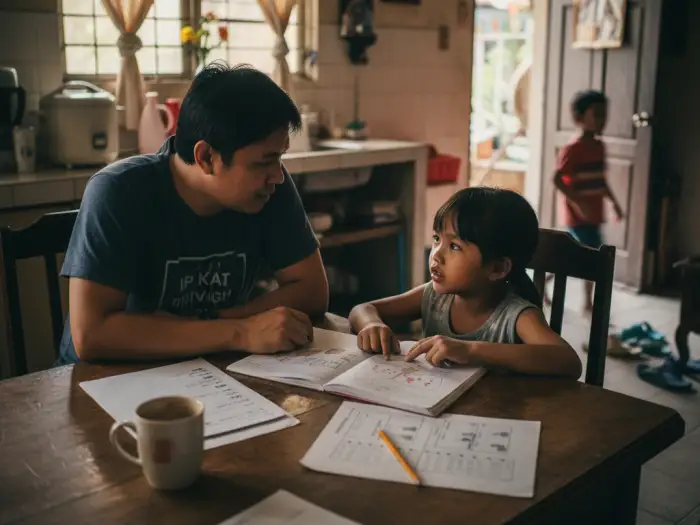
🗣️ Create an Open Communication Channel
Even if you notice red flags, your child may not automatically admit they are being bullied. Many Filipino kids stay quiet out of fear of being labeled “sumbungero” or worry that their parents will overreact. That’s why building trust and a safe space at home is one of the most effective anti-bullying tips for parents.
Daily “Kamustahan” Matters
Instead of waiting for problems to surface, make checking in a daily habit. A simple, “Kamusta ang araw mo?” at dinner time can open doors. The key is to listen without immediately judging or lecturing. Kids are more likely to talk if they feel heard.
Ask Open-Ended Questions
Avoid yes/no questions like “May nang-bully ba sayo?” which may feel confrontational. Try gentle prompts instead:
-
“Sino mga kalaro mo sa recess?”
-
“Ano pinaka-nakakatawa sa araw mo?”
-
“Kung pwede mong palitan isang bagay sa school, ano yun?”
These invite your child to share details naturally, sometimes revealing situations where bullying might occur.
Share Your Own Stories
Many Pinoy parents hesitate to be vulnerable, but sharing your own experiences can make kids feel less alone. For example:
-
“Nung grade school ako, tinukso din ako kasi payatot ako. Nakakahiya, pero eventually natuto ako magsabi kay teacher.”
Hearing that you’ve faced teasing or bullying helps them realize it’s not their fault and that talking about it is okay.
Reassure, Don’t Overreact
Children sometimes hide bullying because they’re afraid their parents will march into school and cause a scene. Reassure them:
-
“Hindi ako magagalit. Hindi rin ako gagawa ng move na hindi mo alam. Pag-usapan natin kung ano gusto mong gawin.”
This builds trust and shows that you’ll handle things together.
Make Home a Safe Zone
-
Avoid mocking or teasing your child at home (even “jokes” about weight, skin tone, or academics can feel hurtful).
-
Encourage siblings to support rather than tease each other.
-
Reinforce that home is a place where they are loved and protected no matter what.
When children feel they can open up freely, parents are in a much stronger position to protect them from bullies and intervene early.
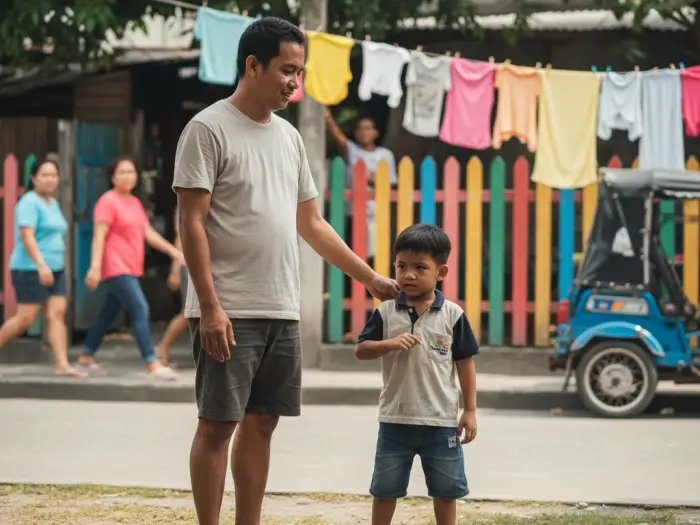
🛡️ Teach Your Child How to Respond
Parents can’t always be there to step in when bullying happens. That’s why one of the best ways to protect your child from bullies is to equip them with tools to respond confidently and safely. The goal isn’t to make them aggressive-it’s to help them feel empowered instead of helpless.
Role-Play Scenarios
Practice common bullying situations at home so your child feels prepared. Role-playing helps them rehearse what to say or do:
-
If teased about appearance: “Stop that. Hindi nakakatawa.” (said firmly, then walk away).
-
If classmates gang up on them: “I don’t like that. I’ll go sit somewhere else.”
-
If threatened: “Hindi tama yan. I’m going to tell teacher.”
By practicing assertive responses, children learn to speak firmly without escalating the conflict.
Staying Calm and Safe
-
Don’t retaliate with violence unless they are in immediate danger. Teach them that self-defense is only for protection, not revenge.
-
Ignore verbal taunts when possible-bullies often thrive on reactions. Walking away denies them the satisfaction.
-
Seek help immediately if harassment continues, especially if physical.
Assertive, Not Aggressive
Teach your child body language:
-
Stand tall, make eye contact, and use a firm voice.
-
Avoid shouting or insulting back-this may escalate the situation.
-
Example script: “Ayoko ng ginagawa mo. Tumigil ka na.”
Knowing Who to Approach
Many children don’t realize there are trusted adults in school who can help. Make sure your child knows they can go to:
-
Their class adviser or subject teacher
-
The guidance counselor
-
A trusted kuya/ate mentor (some schools have peer buddy systems)
-
In severe cases, even the principal
Reinforce that asking for help is not being weak-it’s a smart and brave move.
Special Note on Physical Bullying
If the child is repeatedly harmed physically (pushed, slapped, tripped), parents should emphasize two things:
-
Protect yourself first-move away or block blows if possible.
-
Report it right away. Some parents also consider enrolling their child in self-defense classes (karate, taekwondo) to build confidence and give them protective skills.
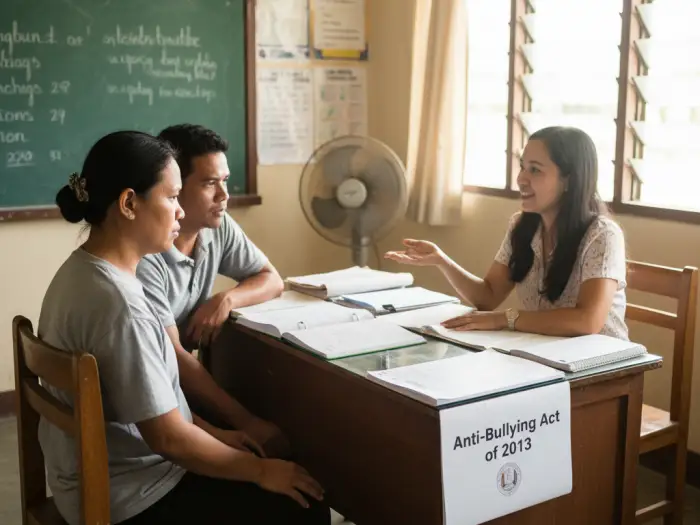
🏫 Working with the School
Even the bravest child needs backup. As parents, your role is to ensure the school environment is safe and that teachers take bullying seriously. The good news is that under the Anti-Bullying Act of 2013 (RA 10627), every school in the Philippines is required to have clear anti-bullying policies. Still, many parents don’t know how to work with schools effectively.
Step 1: Document the Incidents
Keep a detailed log of every bullying episode your child shares. Note:
-
Date & time of the incident
-
Location (classroom, canteen, bus, online platform)
-
Names of people involved (bully, witnesses, teacher present)
-
What exactly happened (verbal insult, physical harm, cyberbullying message)
-
Evidence – take photos of damaged belongings or bruises, and screenshots of cyberbullying messages
Having clear records shows the school that this is a pattern, not a one-off event.
Step 2: Request a Meeting Calmly
Set an appointment with your child’s class adviser or guidance counselor. Approach the conversation as a partner, not an accuser. For example:
-
Instead of: “Hindi niyo bantay mga estudyante niyo!”
-
Try: “Napansin ko itong mga incidents kay [Child’s Name]. Ano po kaya ang pwedeng steps na gawin natin together?”
Most teachers want to help, but they can only act if they know what’s happening.
Step 3: Refer to the School’s Anti-Bullying Policy
Every Philippine school, public or private, is mandated to implement RA 10627. Ask the school how they enforce it:
-
Do they have an anonymous reporting system?
-
What interventions are done for the victim and the bully?
-
How do they ensure separation so your child isn’t placed with the bully?
-
Are counseling sessions provided for both sides?
Being familiar with the law gives you confidence and signals to the school that you’re aware of your child’s rights.
Step 4: Escalate if Needed
If the initial meeting doesn’t resolve the issue and bullying persists:
-
Talk to the principal – request a formal action plan and timeline for interventions.
-
Contact the DepEd Division Office – report if the school isn’t following RA 10627.
-
Consider school transfer – in extreme cases where your child’s safety is compromised, prioritize their well-being over convenience.
Step 5: Stay Involved
Don’t stop after one meeting. Follow up regularly with the teacher or counselor. Ask:
-
“How has my child been doing in class this week?”
-
“Have you noticed any more issues with the other student?”
Consistency tells the school you’re serious and reminds your child that you are actively protecting them.
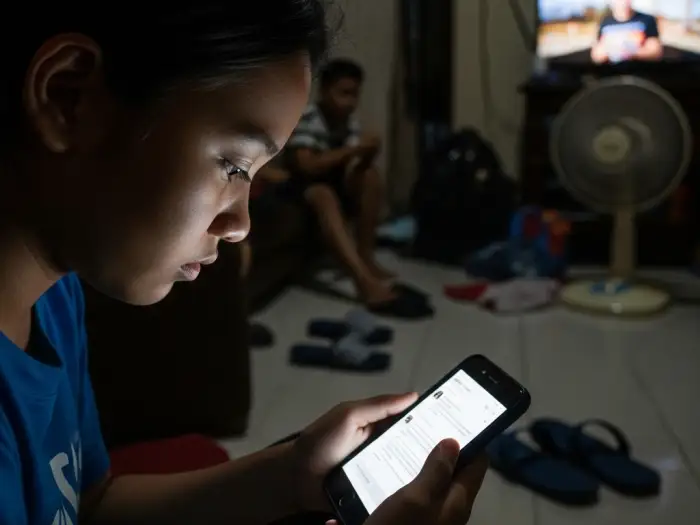
💻 Bullying in the Digital Age (Cyberbullying)
Today, bullying doesn’t stop when the school bell rings. With smartphones, Messenger, TikTok, and Facebook in the hands of even grade schoolers, cyberbullying in the Philippines has become one of the biggest threats to children’s mental health. Unlike physical bullying, online harassment can follow kids everywhere-even into the privacy of their own bedroom.
What Cyberbullying Looks Like
-
Hurtful messages or group chats – classmates excluding a child from GC’s (group chats) or sending insults privately
-
Name-calling or shaming posts – memes, edited photos, or public posts making fun of appearance, grades, or background
-
Online impersonation – fake accounts created to spread rumors or send harassing messages
-
Threats or coercion – demanding money, photos, or favors under threat of exposure
Signs Your Child May Be Cyberbullied
-
Gets upset, angry, or anxious after checking their phone or computer
-
Becomes secretive about online activities or quickly hides their screen when you walk in
-
Sudden withdrawal from social media, or asking to delete accounts without explanation
-
Drop in self-esteem, mood swings, or reluctance to go online at all
What Parents Can Do
-
Establish Open Rules on Internet Use
-
For younger kids, you can set a rule that you must be “friends” with them on FB or have access to their Messenger account.
-
For teens, set healthy boundaries instead of total control: talk about online risks and encourage them to come to you if something feels wrong.
-
-
Teach Online Safety Habits
-
Don’t share personal info (address, phone number, school name).
-
Think before posting photos-what seems funny now could be used against them later.
-
Use privacy settings wisely; limit posts to trusted friends only.
-
-
If Cyberbullying Happens
-
Document everything – take screenshots of messages, posts, or chats.
-
Report and block – Facebook, TikTok, and Messenger have reporting tools.
-
Inform the school – under RA 10627, schools must address cyberbullying if it affects a child’s well-being and school life.
-
Consider legal action – in extreme cases (serious threats, extortion), consult authorities since cyberbullying can fall under the Cybercrime Prevention Act.
-
Pinoy Parenting Tip
Remind your child that online life is just as real as offline life. If someone is hurting them on Messenger, TikTok, or Facebook, it’s valid to treat it seriously. Assure them: “Hindi mo kasalanan. At hindi ka nag-iisa. Nandito ako para tumulong.”
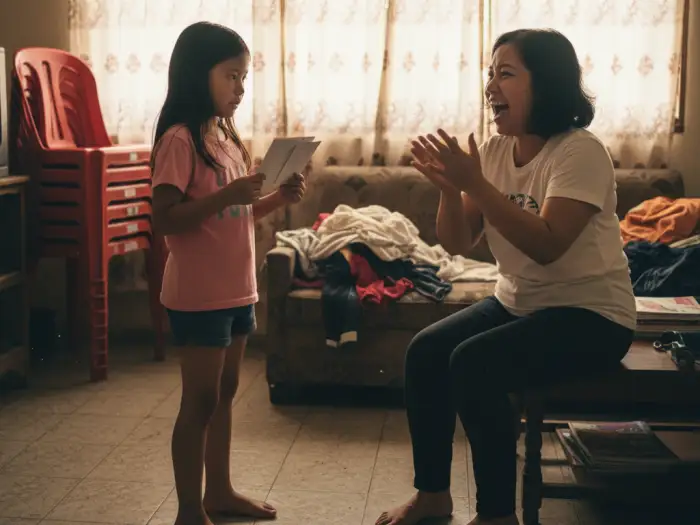
💪 Strengthening Your Child’s Confidence
Bullies often target children who appear shy, isolated, or unsure of themselves. One of the best ways to protect your child from bullies is to help them build self-confidence and resilience. When kids believe in themselves, they become less vulnerable to intimidation-and more likely to speak up when something’s wrong.
Encourage Activities Where They Shine
-
Sports – Enroll them in basketball, taekwondo, swimming, or volleyball. Physical activity not only keeps them healthy but also teaches teamwork and discipline.
-
Arts and Hobbies – Music lessons, drawing classes, or theater workshops can help children discover talents that boost their pride and self-expression.
-
Community Involvement – Joining church youth groups, barangay dance troupes, or volunteer projects gives them a sense of belonging outside of school.
Build Social Connections
-
Encourage your child to make at least one trusted buddy in school. Having even one ally can discourage bullies from targeting them.
-
Arrange playdates, summer workshops, or family gatherings with cousins and friends to widen their support network.
Teach Social Skills
Sometimes children who struggle socially may appear like easier targets. Parents can role-play greetings, starting conversations, or how to confidently say “No” when pressured. These small skills help kids feel more comfortable in groups.
Consider Self-Defense Training
Martial arts like karate, arnis, or taekwondo are popular in the Philippines. These classes aren’t about encouraging violence-they build discipline, respect, and the ability to protect oneself if physically attacked. Even just knowing they have the skills can make children walk taller and act more confidently.
Daily Affirmations at Home
Bullying chips away at a child’s self-worth, so home must be the place that rebuilds it.
-
Praise their efforts, not just achievements: “Ang galing mo sa effort mo sa project!”
-
Highlight their strengths: “Mabait ka sa kapatid mo, and that’s something to be proud of.”
-
Encourage them to share victories, no matter how small, at the dinner table.
Why Confidence Matters
Confident children are less likely to be seen as “easy targets.” More importantly, they know they have value beyond what bullies say. With a strong sense of self, they can recover faster from hurtful experiences and continue to thrive.
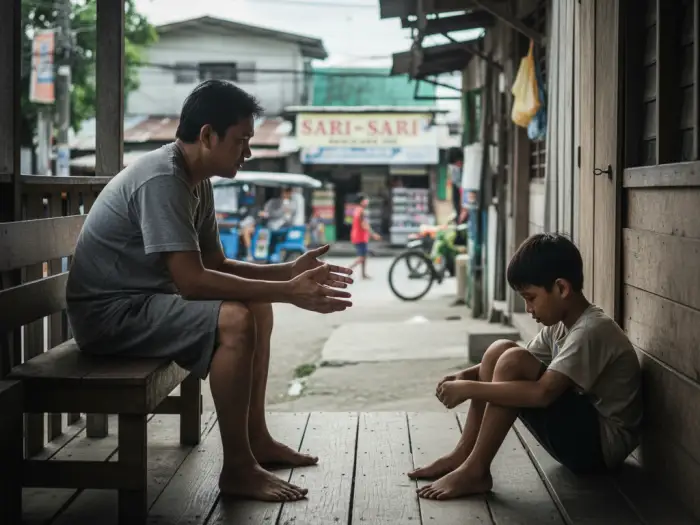
🔍 When Your Child Might Be the Bully
As painful as it is to admit, sometimes our own children may be the ones causing harm. Bullying doesn’t always come from “bad kids”-often, it’s a behavior learned from stress, peer pressure, or even their own experiences of being bullied. Recognizing the signs early allows parents to guide their child back toward kindness and respect.
Signs Your Child May Be Bullying Others
-
Aggressive behavior at home – Picking fights with siblings, shouting at elders, or showing little patience.
-
Lack of empathy – Laughing at others’ mistakes or not caring when someone is hurt.
-
Teacher feedback – If a teacher or counselor calls you about repeated conflicts, teasing, or hurting classmates, take it seriously.
-
Peer group influence – Sometimes kids bully to fit in with a group that rewards toughness or dominance.
Why Kids Bully
-
Attention-seeking – A child may act out to gain recognition from peers or adults.
-
Insecurity – Children who feel powerless in other areas (like academics or family issues) sometimes put others down to feel strong.
-
Learned behavior – If they see bullying or harsh behavior at home, school, or media, they may copy it.
-
Retaliation – Some bullies were victims themselves and are repeating the cycle.
What Parents Can Do
-
Listen and Understand
Don’t jump straight to punishment. Ask open-ended questions: “Bakit mo ginawa yun sa classmate mo?” Sometimes you’ll find the root issue is loneliness, jealousy, or needing attention. -
Set Firm Boundaries
Make it clear that bullying is unacceptable. Apply fair but firm consequences (loss of screen time, extra chores) if bullying continues. -
Teach Empathy
Help your child see the other perspective. For example: “Kung ginawa sa’yo yan, anong mararamdaman mo?” Role-playing empathy can make kids think twice before hurting others. -
Work with the School
Partner with teachers and counselors to monitor behavior. Consistency at home and school ensures your child gets the same message. -
Model Respect at Home
Kids learn more from what we do than what we say. Show respect to helpers, teachers, and even strangers so your child sees positive examples.
Remember the Filipino Value of “Respeto”
Teach your child the golden rule embedded in our culture: “Ayaw mong gawin sa’yo, huwag mong gawin sa kapwa.” Respect for others is at the heart of being Filipino. Instilling this value early can prevent bullying behavior from taking root.
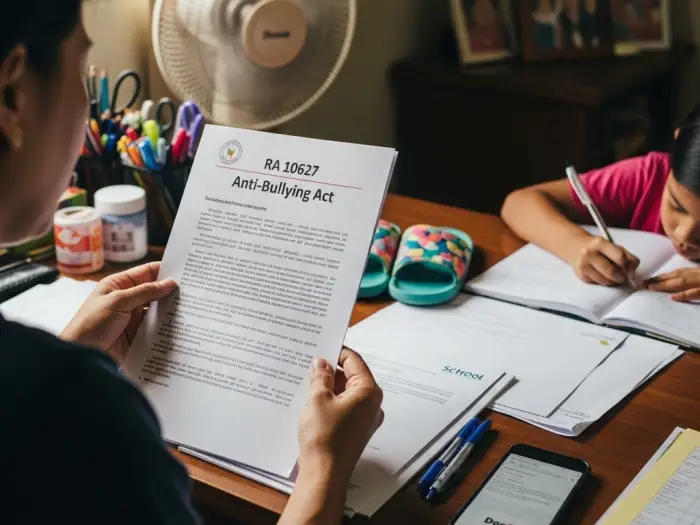
⚖️ The Legal Aspect of Bullying in the Philippines
Bullying is not just “kids being kids.” In the Philippines, it is taken seriously by law. Thanks to the Anti-Bullying Act of 2013 (Republic Act 10627), schools are legally required to create policies that prevent, address, and resolve cases of bullying. Understanding your child’s rights-and your role as a parent-can make a big difference.
What RA 10627 Covers
-
Definition of Bullying – Includes physical harm, verbal taunts, social exclusion, cyberbullying, and damage to property.
-
Scope – Applies to all public and private elementary and secondary schools in the country.
-
School Responsibility – Schools must have clear anti-bullying policies, reporting mechanisms, and interventions for both victim and bully.
Consequences for Bullies
Depending on severity and frequency, schools may impose:
-
Written warnings
-
Suspension (short or long-term)
-
Expulsion for repeat or severe cases
For cyberbullying, cases may also fall under the Cybercrime Prevention Act (RA 10175), especially if threats, extortion, or harassment are involved.
Role of Parents
-
For victims: Parents have the right to demand action, counseling, and protective measures for their child.
-
For bullies: Parents are expected to cooperate with schools in correcting behavior. RA 10627 emphasizes intervention, not just punishment.
When to Escalate
If the school fails to act or downplays the problem, you can:
-
Bring the issue to the school principal or Board of Directors (for private schools).
-
Elevate to the DepEd Division Office.
-
In severe cases involving physical injury, harassment, or cybercrime, seek help from law enforcement or legal counsel.
Why This Matters
Knowing the law gives parents confidence. It assures you that bullying is recognized as a serious issue-not just “pambubuska” or “asaran.” More importantly, it reminds schools of their duty to protect every child’s right to a safe learning environment.
❓ FAQs About Bullying in the Philippines
1. What is considered bullying under Philippine law?
Bullying includes physical harm, verbal abuse, social exclusion, damage to property, and cyberbullying. RA 10627 makes schools accountable for addressing all these forms.
2. How do I know if my child is being bullied?
Watch for red flags like sudden fear of school, unexplained injuries, mood changes, or requests for extra money. Kids may not tell you directly, so observe behavior closely.
3. Should I confront the bully or their parents directly?
It’s best to work through the school first. Direct confrontations can escalate tensions-let teachers or guidance counselors mediate.
4. What if telling the teacher only makes things worse?
Ask the school to monitor discreetly without exposing your child as the source. If it continues, escalate to the principal or DepEd Division Office.
5. Can cyberbullying be punished under Philippine law?
Yes. Cyberbullying can be covered under RA 10627 and, in serious cases, the Cybercrime Prevention Act (RA 10175). Documentation and reporting are key.
6. How can I boost my child’s self-esteem after bullying?
Affirm their strengths at home, involve them in hobbies or sports, and give them supportive friend circles. Professional counseling may also help them heal emotionally.
7. What if my child is the bully?
Take it seriously but with empathy. Understand the reasons, set firm rules, and work with teachers or counselors to correct the behavior.
8. How can I prevent bullying before it starts?
Teach kindness and respect at home, model empathy, and encourage open communication. A confident, socially connected child is less likely to be targeted or become a bully.
9. Is transferring schools a good solution?
It can help in extreme cases, but it’s better to first exhaust the school’s anti-bullying policies. Moving should be a last resort if your child’s safety is at stake.
10. How involved should I be with the school’s anti-bullying policy?
Very involved-parents can ask for copies of the school’s policy, attend meetings, and suggest improvements. Active partnership between parents and schools ensures stronger protection for all children.
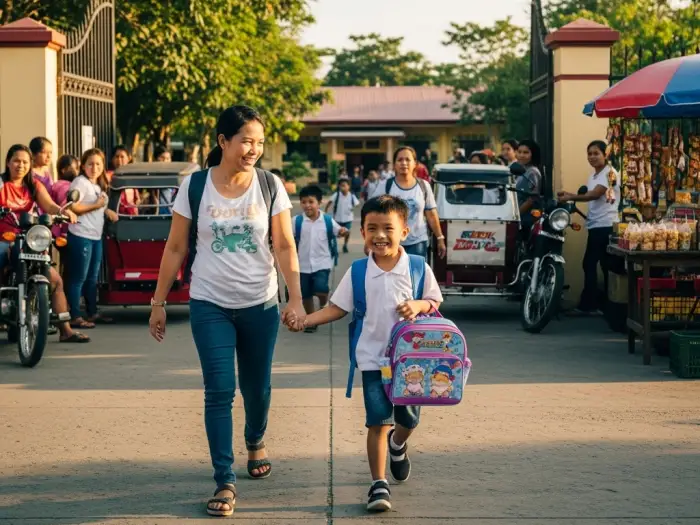
💖 Standing Strong: Parents as the First Line of Defense
Bullying can leave deep scars, but with the right support, children can rise above it. As Filipino parents, our role goes beyond providing food and shelter-we are also our children’s protectors, advocates, and cheerleaders. When we listen, believe, and act, we give them the courage to face challenges with resilience.
From spotting the early signs of bullying, to working hand-in-hand with schools, to teaching kids confidence and respect, every small step counts. The Anti-Bullying Act (RA 10627) provides legal protection, but it’s parental love, patience, and guidance that make the biggest difference.
Remember this: no child should ever feel alone in their struggle. With a safe and supportive home, and a community that values respect over cruelty, our kids can grow not only safe-but stronger, kinder, and braver. Together, we can break the cycle of bullying and build a culture of bayanihan, not intimidation.
📚 References
-
Republic Act No. 10627 – Anti-Bullying Act of 2013 – eLibrary
-
Revised Implementing Rules and Regulations (IRR) of RA 10627 – Department of Education+1
-
DepEd: Bullying prevention – Creating an inclusive & accepting environment – Department of Education
-
DepEd official statement on revising anti-bullying and safe spaces policies – Department of Education
-
Filing an Anti-Bullying Case in the Philippines – RESPICIO & CO.
-
EDCOM 2 calls for amendment of Anti-Bullying IRR – Edcom2
-
DepEd signs new IRR of RA 10627, expanding definitions & stricter sanctions – Senate of the Philippines



